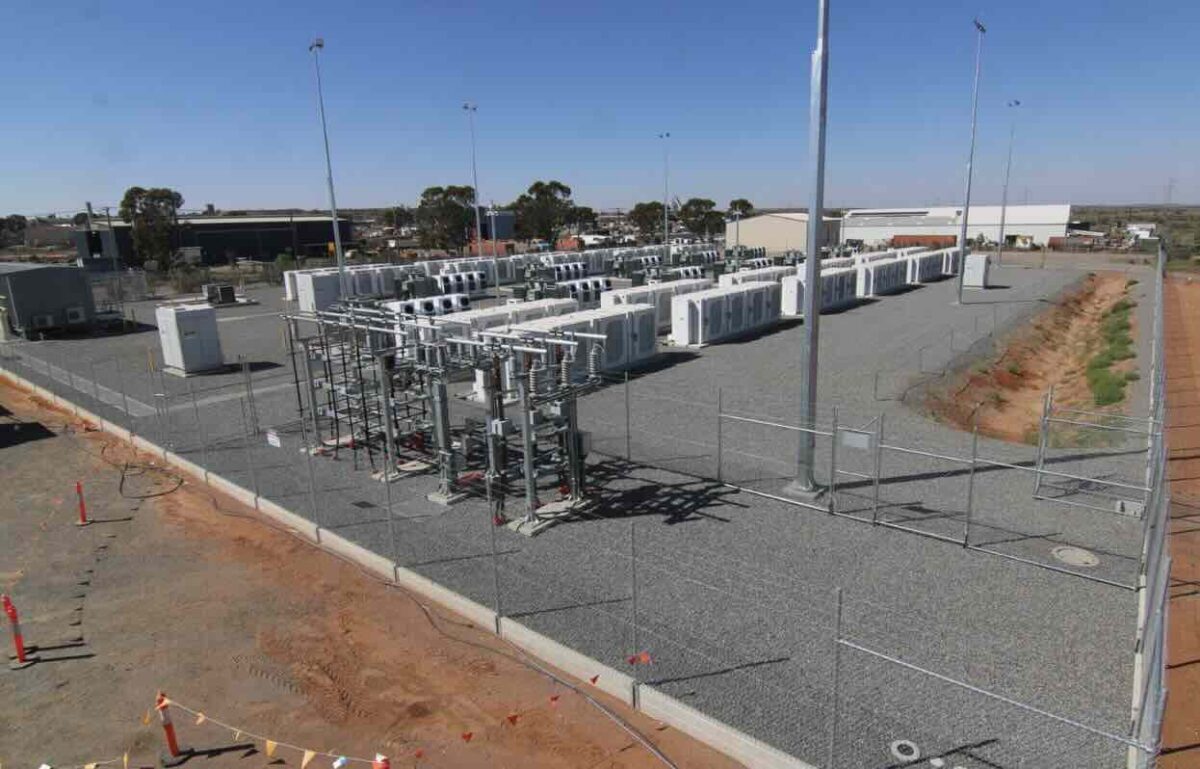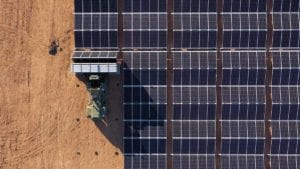The Broken Hill battery – a “pioneering” project designed to test out grid forming inverters in a remote and weak part of Australia’s main grid – is finally showing signs of activity after nearly a year of delays believed to have been caused by problems over the connections process.
The 50 MW, 50 MWh battery at Broken Hill – which is receiving funding from the Australian Renewable Energy Agency to support the use of grid-forming inverters – began construction in November 2022, when the company said the battery should be operational by the middle of 2023.
In November 2023 the battery was included in the market operator’s grid management system. But it has taken another six months for the first signs of activity to appear. This week it has been charging and discharging up to levels of around 4 MW, which could signal it is “hot testing” before entering the formal commissioning process.
The Broken Hill battery is one of a number of big battery projects that have been held up by issues with the often complex and strict connection process in the Australian grid.
Last week the 100 MW, 200 MWh Capital battery owned by Neoen in Canberra finally began its “hot testing” after nearly a year of delays, and is expected to move into its first “hold point” – part of a commissioning process that can take months – sometime soon.
Another big battery project, the 41 MW, one hour Tailem Bend battery – adjoining the two Tailem Bend solar farms in Australia – has also been held up by connection delays and shows no signs of activity. Owner Vena Energy said it was supposed to be operating in 2023. Both the Capital and Tailem Bend batteries are using Doosan Gridtech technology.
The full reasons for the delays have not been disclosed, but late last year AGL wrote in a Knowledge Sharing report – delivered as part of the Arena funding agreement – that the current connection processed for battery storage projects in general, and ones for grid forming inverters in particular, is not fit for purpose.
“As AGL progressed through the connection application process for the Broken Hill Battery Energy Storage System, it became clear that current processes and tests were not suitable for assessing advanced grid-forming inverter-based resources (IBRs) and their impact on grids,” it said.
“New processes and tests need to be defined and agreed in order to consider recent issues related to the integration of IBRs (inverter-based resources such as wind, solar and battery storage).”
One of the issues with the Broken Hill project was around the IP (intellectual property) of the grid forming inverter technology, held by the technology provider Fluence.
“Grid-Forming Inverter core intellectual property (IP) resources such as the functional block diagrams, which provide essential information about how the inverter works, are not available to AGL or Aurecon (its consultant),” the report notes.
The 50MW, one hour battery is being built by AGL at the end of a long transmission line that is often subject to heavy restrictions and means that the 200 MW Silverton wind farm and the 53 MW Broken Hill solar farm have been among the most constrained projects on the grid.
The $41 million Broken Hill battery project received $14.8 million from Arena, to explore the use of “grid forming” inverters in what Arena boss Darren Miller described as “some of the most challenging conditions” on the National Electricity Market.








